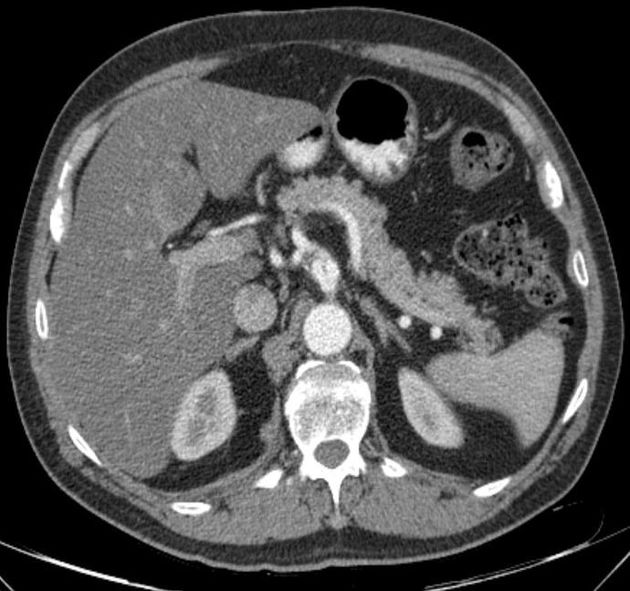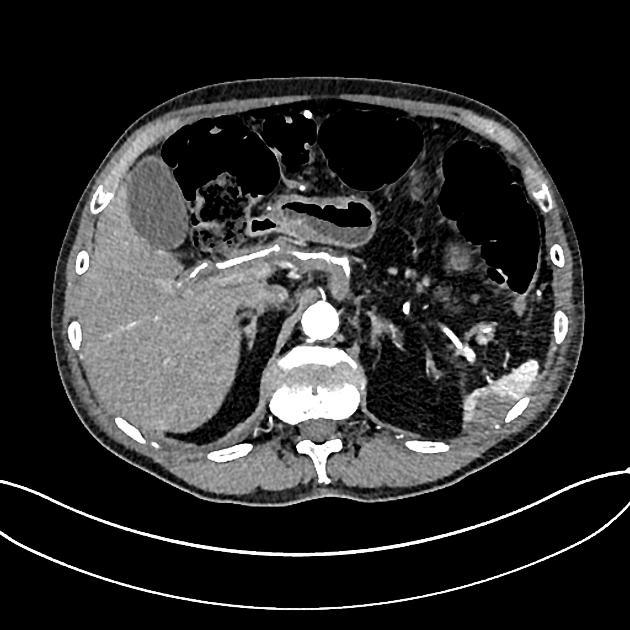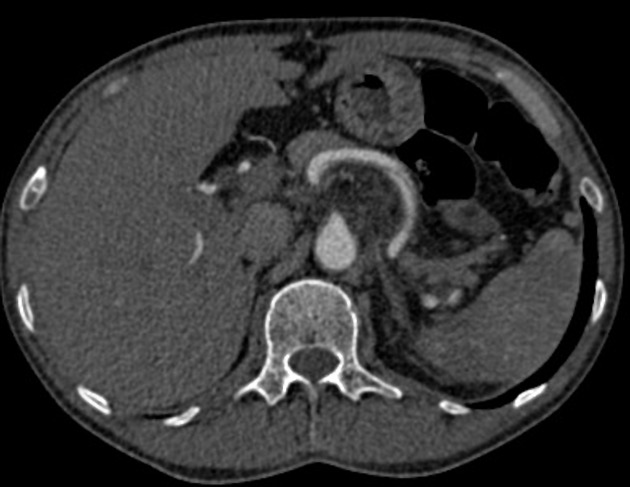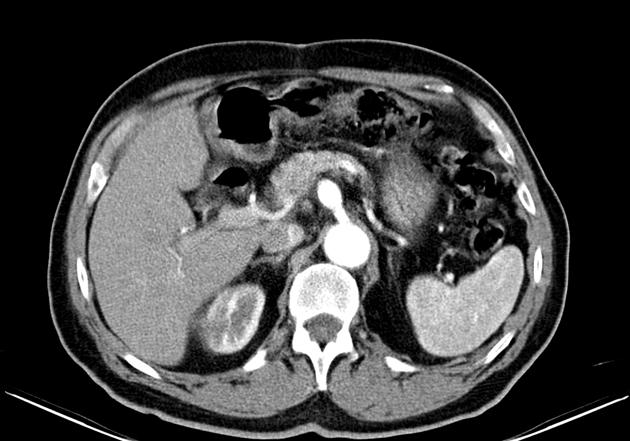Coeliac artery dissection is a type of arterial dissection. Dissection of the coeliac artery is rarely seen as a primary phenomenon and is most often encountered due to propagation of an aortic dissection.
On this page:
Epidemiology
Coeliac artery dissection is usually iatrogenic but may also be secondary to:
trauma
pregnancy
cystic medial degeneration/necrosis
inflammatory or infectious diseases
The mean age of diagnosis is 55 years, with a male predominance.
Clinical presentation
Coeliac artery dissection is likely to be under-reported due extensive collateral networks in the foregut making the development of small bowel ischaemia infrequent and presenting symptoms varied.
Extension into the visceral arteries (e.g. splenic artery aneurysm or hepatic artery aneurysm) may lead to abdominal pain. Extension into the superior mesenteric artery can lead to bowel ischaemia.
Symptoms are similar to chronic mesenteric ischaemia, including post-prandial pain.
Radiographic features
CT angiography
Findings include:
presence of an intimal flap
eccentric mural thrombus in the lumen
fat stranding around the coeliac artery
Treatment and prognosis
Endovascular management
endovascular stent placement
endovascular fenestration
Surgical intervention
resection of the dissected segment with anastomosis or bypass creation
Conservative treatment
anticoagulation and optimisation of blood pressure may be appropriate in cases with limited dissection, the aim of medical treatment is to prevent thromboembolic complications
Complications
aneurysm formation
arterial occlusion








 Unable to process the form. Check for errors and try again.
Unable to process the form. Check for errors and try again.